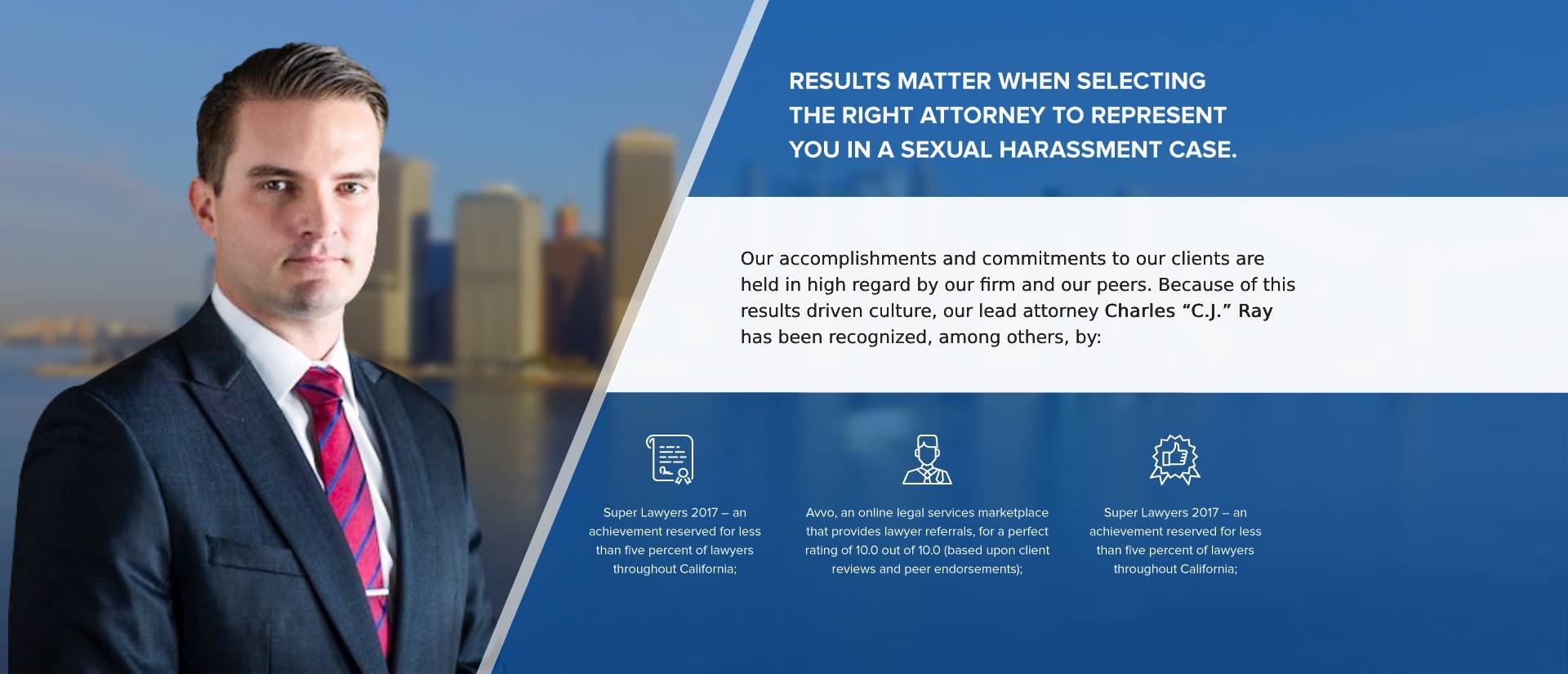If you face discrimination or harassment in your workplace, you can file a lawsuit against your employer or harasser to stop the harassment and receive compensation for the resulting damages. You can do this with the assistance of a competent attorney. An attorney will ensure you understand your legal situation, rights, options, and processes. They will also prepare and file the required documents on your behalf. Additionally, your attorney will ensure you meet all the required deadlines to file a valid claim.
According to the statute of limitations, workplace discrimination and harassment lawsuits must be brought within a specific time in California. It helps to understand this, your timeline, and what you must do within that timeline for a successful claim. At Sexual Harassment Attorney, we can help you fight for what you deserve. Our team has extensive training and experience in handling all kinds of harassment lawsuits.
The Legal Meaning of the Statute of Limitations
The statute of limitations is the law that determines a deadline by which a person can take legal action on a particular matter. The law mainly applies to civil cases, and the time limit primarily depends on relevant laws and the expected result. The statute of limitations is usually set by federal courts, which the states use for various civil cases they receive. Understanding the statute of limitations on your particular lawsuit is crucial, as it can guide you through the processes you must follow to file a successful claim. You are also careful not to file your case after the time limit allocated for your case, which could result in a case dismissal.
The statute of limitations provides timelines or headlines within which you can file a lawsuit. A deadline is critical to avoid indefinitely dragging on a civil matter, which can lead to denied justice. The statute ensures fairness for the plaintiff and defendant. For example, a plaintiff can file a claim and receive compensation within a particular period or when needed. The statute protects defendants from carrying the burden of an unsolved matter in their heads for a very long time. When a civil matter is resolved within a particular period, involved parties can quickly move on.
The statute of limitations also ensures cases are resolved when evidence remains fresh and available. Plaintiffs and defendants can collect and preserve evidence for one or two years, after which it can be downgraded and useless legally. The evidence gathered can become inadmissible in court when cases drag on for years. This can result in an unfair resolution of a case. A critical eyewitness will not stick around for years. Their testimony can also change over time. It becomes impossible for judges to rule justly if the evidence gathered is no longer reliable or available.
Thus, if you wish to bring a lawsuit against your employer or any other party for workplace discrimination or harassment, a skilled attorney can help you understand the timelines within which you must act. This will help you know when to gather evidence, when to prepare documents, and when to file your case in court. They will also work with you to ensure you meet the set timelines for each legal process. This way, your case will remain valid to the end. If you bring a lawsuit after the set deadline, the judge will not admit it, regardless of the validity of your claim and the strength of your evidence.
The statute of limitations that apply to your case will depend on the discrimination lawsuit you are filing. Most employment discrimination lawsuits are based on the following laws:
- Discrimination or harassment based on your nationality, race, sex, color, and religion in violation of Title VII of the Civil Rights Act of 1964.
- Discrimination or harassment based on your race, color, sex, religion, nationality, ancestry, marital status, age, medical condition, or physical disability in violation of the Fair Employment & Housing Act of California.
Your attorney will guide you on the exact law by which you can bring your lawsuit, depending on the facts of your case. They will also determine the timeline for filing your case in a civil court. Additionally, your attorney will ensure you file an administrative charge for investigation and determination before you can file a civil claim.
You must work hard at preparing your case and the required documents to file it within the timeline provided. If this does not happen, you lose your right to bring a claim on that particular matter. In most cases, you lose that right indefinitely. The statute of limitations sets timelines for civil cases from one to ten years. The starting date is the day the violation occurred or the day you discovered the violation.
When To Bring a Wrongful Termination Lawsuit
California is a willful employment state, so employers can terminate an employee’s contract at any point, provided they have a valid reason. However, this right should not violate any discrimination or harassment law, public policy, or law protecting employees. If an employee is incompetent or commits fraud, an employer has the right to fire them.
However, employers are prohibited from unlawfully terminating employees. Suppose an employer breaks any law protecting employees. In that case, the worker has up to two years from their termination date to bring a civil suit against the employer for unlawful termination. You can base your wrongful termination on these two laws:
- The Fair Employment & Housing Act (state law).
- The Civil Rights Code of 1964 (federal law).
Your attorney will consider the facts of your case to determine the law under which you should bring your lawsuit. Additionally, these statutes have a specific timeline for bringing the lawsuit. For example, several anti-discrimination federal laws, including the Civil Rights Act (1964), give employees 180 days to bring charges against their employer. You can file your case with the EEOC for investigation and determination. The 180-day period runs from the day you are wrongfully terminated from work.
If the EEOC cannot adequately determine the case, they will notify you of your right to bring a lawsuit against your employer. You must bring a civil case within one year of receiving this notice.
If you want to bring a claim under the Fair Employment & Housing Act, you have 300 days to file charges with the agency. These days start from the time you are maltreated in your workplace. If the agency does not determine the matter satisfactorily, they will notify you of your right to file a suit in a civil court. You must bring a civil suit within one year of receiving this notice.
Once you file charges under the respective statutes, the departments charged with investigating and determining these cases will take over. They will gather evidence and conduct hearings to determine the circumstances and possible penalties for the violation. You must prepare for the hearings with evidence and statements to ensure your interests are considered in all the processes. These processes are necessary for various cases, including the following:
- If an employer fails to pay your due wages.
- If they make unauthorized deductions from your paycheck.
- If they fail to maintain your employment records properly.
- If your employer fails to pay your overtime compensation.
- If they violate your employment contract or policies within the personnel handbook.
If your employer has failed to pay your overtime wages, you have three years to bring charges against them. If your employer commits overtime violations, code violations, unauthorized deductions, and recordkeeping violations, you must file charges within three years. There is a two-year timeline for violating oral contracts or oral agreements. You must prepare everything you need for the case, including the required paperwork and evidence, within the given timeline.
If you want to bring a claim for violations related to the labor code, you must do so with a local labor commissioner within the required time. Examples of these violations include the following:
- Claims for unpaid overtime.
- Minimum wages.
- Commission.
You have three years from earning the payment in dispute to bring a claim with a Labor Commissioner or civil court. You could lose part of your claims if you worked for three years or more for that employer. You will have additional time to file your case if you add a Business & Professions Code 17200 to your claim. However, the added time only applies to claims filed in court rather than those filed with the commissioner.
What To Do While Preparing The Lawsuit
The statute of limitations sets deadlines for various civil suits to allow plaintiffs to prepare their cases well and defendants to prepare well for defense. You must do a lot within the set deadlines to ensure you bring a successful claim against your employer or the responsible party for your workplace discrimination, harassment, or wrongful termination. Remember that you have a valid claim if your employer violates public policies or federal or state laws that protect employees.
Understanding the steps to take while preparing the lawsuit is necessary to ensure you have what the court needs to resolve your case favorably.
Hiring an Attorney
An unlawful termination or workplace discrimination is not always straightforward. You could have a valid claim and not know what to do with it. You need a skilled attorney's guidance, counsel, and assistance to understand your situation options and the correct legal action. Thus, hiring an attorney should be the first thing you do if you suspect unfair treatment by your employer.
Your attorney must have the necessary skills and experience to handle workplace-related lawsuits. They must also understand the federal and state laws that protect employees. Having the right attorney will improve your chances of obtaining a favorable outcome for your case.
Understanding Your Legal Situation
It is vital to understand your situation before acting against your employer for unlawful termination, workplace harassment, or discrimination. This ensures you know what you deserve and the strong points of your case. A skilled attorney will ensure you understand what workplace discrimination, harassment, or unlawful termination is. They will also let you know if you have a valid case and your options for obtaining a favorable outcome.
Thus, first, understand if your termination was wrongful and its cause. If you were wrongfully terminated due to discrimination or retaliation, you have solid grounds for suing for wrongful termination. Review your work contract with your attorney, the relevant laws, and the company policies to understand your situation.
Complete Administrative Processes
Remember that some administrative procedures are required before filing a wrongful termination lawsuit in California. You have to go through these and only sue if these procedures do not resolve the matter satisfactorily. For example, if you have been wrongfully terminated, you must first file a case with EEOC or your state employment agency for investigation and determination. The choice of agency to work with will depend on the details of your case.
Your attorney will ensure you understand how these administrative procedures work, their importance, and what to do if you are unhappy with their outcome.
Initiate a Legal Action
Remember that the statute of limitations provides strict timelines within which you must act to file a valid claim in court. Thus, you must take legal action as soon as possible, before so much time elapses, as that could jeopardize your situation. With the assistance of your attorney, you can start gathering evidence, interviewing eyewitnesses, and preparing the necessary documents for filing. You can also start reviewing your workplace policies, employee contracts, and the laws your employer could have violated. Ensure you file charges within the required time. If this does not work, file a lawsuit within the necessary time and wait for a judge to hear and determine the case.
Present Your Case in a Hearing
Once you file charges with EEOC, you must prepare to present your evidence and statements to support your claim. Your attorney will guide you on what to do or say and what to avoid to improve your chances of success. They can also represent you during the hearings to serve your best interests. If you file a lawsuit, you must also be prepared to fight for your claim in a hearing. The judge will consider your evidence, statements, and the defendant's to determine the case.
The strength of your case is determined by the evidence you present and your statements during the hearing. Thus, you must prepare and present the case well.
Case Resolution
After going through all the processes involved in filing a lawsuit, you can wait for the resolution of your case. EEOC or a civil suit judge will consider several factors to determine your case. They will evaluate the circumstances of your termination or discrimination, employment contract, company policies, and civil rights. The ruling will favor you if your case is valid and your evidence is strong. This means that you will receive compensation for the damages incurred. However, the judge can dismiss your case if your claim is invalid.
Your attorney will use the best strategies to ensure your case succeeds. They will also represent you in administrative hearings or civil court and fight for a favorable outcome. If the ruling does not favor you, your attorney can file an appeal and prepare well for a better result.
Damages You Can Recover
Filing a lawsuit against your employer for wrongful termination or workplace harassment aims to recover damages. If you are unfairly terminated from your work, you will likely suffer various damages, which you must include in your civil claim. You must support your claim with evidence showing how you incurred those damages so the court can grant your claim. Here are examples of damages you can recover after a successful lawsuit:
- Lost benefits, wages, and any other monetary compensation you could have received if the termination did not occur.
- Compensation for all the money you have spent on legal services, including your attorney fees and filing fees.
- Compensation for the emotional distress, suffering, and pain you have endured due to wrongful termination or workplace discrimination.
Additionally, your attorney can fight for punitive damages if your employer was criminally or grossly negligent in terminating you.
Find a Competent Sexual Harassment Attorney Near Me
Workplace harassment, discrimination, and wrongful termination can cause you great suffering, pain, and financial loss. Fortunately, you can file a claim against your employer with the EEOC or civil court to recover your damages. The details of your claim will depend on the law your employer violated in terminating or discriminating against you. However, according to the statute of limitations, administrative procedures and civil cases must occur within a particular time. Understanding this statute and the time limit allowed for your specific claim will ensure you file a valid claim.
At Sexual Harassment Attorney, we understand how important it is to sue your discriminatory employer. We can work with you to gather evidence, prepare the case, and file the required paperwork within the given time. Call us at 800-905-1856 for more information about the statute of limitations and our services.



